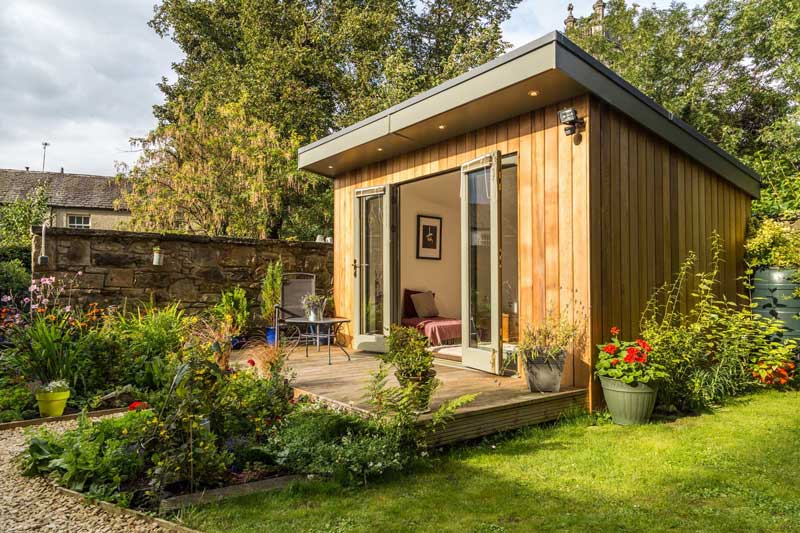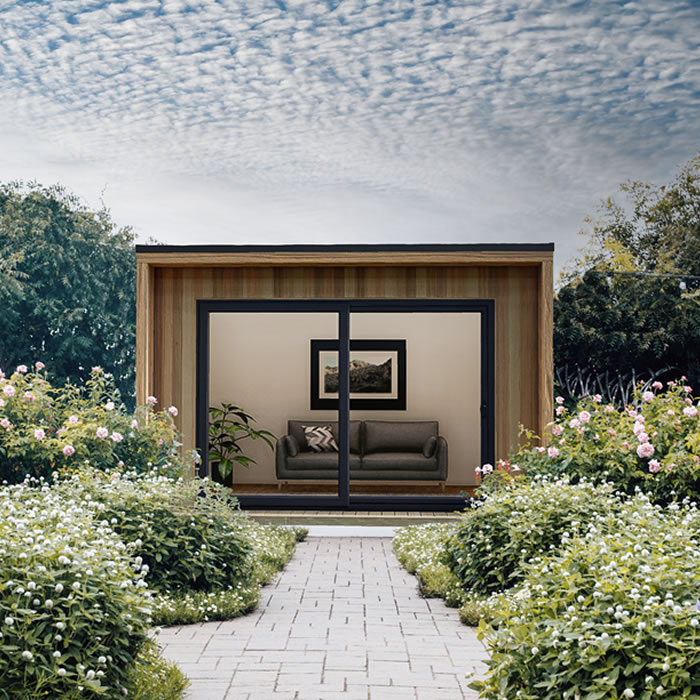Free Tips On Planning Permission On Garden Summer Houses
Free Tips On Planning Permission On Garden Summer Houses
Blog Article
What Planning Permission Are You Required To Get For Your Garden Rooms Etc In Terms Of Size Restrictions?
When you are considering building garden rooms or conservatories or outhouses as well as garden offices the size limitations can determine if you need planning permission. Here's a summary of the typical size-related factors that may require you to seek permission for planning: Total Area Coverage:
The planning permission is required for any detached outbuilding when it is more than 50% of the total that surrounds the home (excluding the footprint).
Height Restrictions
Single-story construction: Maximum eaves height must not be more than 2.5 meters. The total ceiling's height must not exceed 4 meters in the event of an incline that is dual-pitched or 3 meters if not.
The height of buildings within 2 meters is 2.5 meters.
Floor Area:
The building code might be required for structures that are bigger than 30 square metres even though planning permission isn’t required.
Proximity of borders:
If the structure is less than 2 meters from a boundary it is usually required to apply for permission to plan if the structure's height is greater than 2.5 meters.
Building Usage
While not strictly a size limit, the purpose of purpose of the garden could affect whether planning permission is needed. Planning permission could be required in the event that, for example the structure is designed to be used as a office or residential space.
Permitted Development Rights:
Permitted Development Rights have certain size limitations and conditions. The rights can vary based on whether or not the property is within a conservation district.
Conservatories, extensions and other types of conservatories:
If you are looking to build a single-story rear addition, the maximum is 3 or 4 meters depending on whether it's a semi-detached house or a terraced home. The Neighbour Consulting Scheme permits an extension of 8 and 6 meters, or respectively when certain conditions are fulfilled.
The ceiling of a single-story rear extension should not exceed 4 meters.
Side Extenders
The maximum height of an extension on the side should not be more than 4 meters.
Volume Restrictions
In certain zones (such as Conservation Areas and Areas of Outstanding Natural Beauty) A building addition that increases the size of the initial house by more than ten percent (10 percent) or fifty cubic meters (whichever the greater number) is required to obtain planning approval.
Front Extenders
Planning permission is usually required for extensions that extend past the front that faces the street of the original residence.
It's essential to verify the local authority for planning because rules may differ depending on the local council and specific circumstances of the property. Building regulations approval could be required even when planning consent is not needed. This could be due to structural integrity or safety reasons. Take a look at the best garden room extension planning permission for blog advice including myouthouse, costco garden office, best heater for log cabin, garden rooms brookmans park, costco outbuildings, what size garden room without planning permission, composite garden rooms, costco garden buildings, what is a garden room, composite garden rooms and more.
What Planning Permissions Is Required For Garden Rooms Etc In Terms Of Height Restrictions?
Planning permission may be required for the construction of garden rooms, extensions outhouses, conservatories or outhouses. Height limitations are an important aspect in determining if or whether planning permission is needed. Here are the top concerns regarding height that you should keep in your mind:
The maximum height for a detached outbuilding or extension shouldn't exceed 4 meters with a dual-pitched roof (such as Gable roofs).
The maximum height of any other type of roof (flat, single pitched, etc.) should not exceed 3 meters. For all other types (flat or single pitched etc. ) the ceiling height cannot exceed three meters.
Limits of proximity:
The maximum height of a structure that is less than 2 meters away from the boundary cannot exceed 2.5 meters. This rule applies to sheds, garden rooms and similar outbuildings.
The Eaves' Height
For any structure the maximum eaves (the height from the lowest point of the roof) can not be more than 2.5 meters.
Conservatories and Extensions
For a single-story rear extension the height must not be more than 4 meters. The height of the roof and any parapet walls is included.
Side Extensions
Extensions to the sides should not exceed 4 meters and not larger than 50 percent of the dimensions of the house.
Special Roofs
Structures with a flat roof are typically restricted to a maximum 3 m in height.
Additional Restrictions on designated areas
In conservation zones, areas of Outstanding Natural Beauty(AONB) and other areas that are designated, stricter restrictions on height may apply and planning approval could be required for buildings which would otherwise be within the permitted development rights.
Buildings within National Parks
National Parks, like designated areas, may be subject to height restrictions that require approval for planning.
Roof Design
It is important to consider the height of the tallest part (excluding chimneys or antennas). must be taken into consideration. Planning permission could be required if the top point of the structure exceeds the allowed building limits.
Neighbours are affected as well.
Even if an object is within the allowed height limit the planning permit may be needed if the effect on the privacy of neighboring properties or view is substantial.
Maximum Height Overall:
The maximum height of a building must not exceed four meters. For example, a garden office with a dual-pitched roof should not exceed 4 meters at its tallest level.
Decking or platforms:
The decking, platforms or other structures that are attached to the building must not raise the ground higher than 3 metres. This can avoid the requirement for an approval for planning.
Always visit your local planning authority's website for any new regulations or any changes. Even if your development is within the rights to development permitted by general application, specific local variations and property requirements could need planning permission. See the top rated luxury garden buildings for blog info including outhouse uk, how to lay decking on soil, garden office hertfordshire, garden buildings , costco garden rooms, how to lay decking on soil, garden rooms hertfordshire, outhouse building, outhouse uk, what size garden room without planning permission uk and more.
Regarding Design And Appearance, What Sort Of Planning Permits Do You Require For Gardens?
When planning to build garden rooms such as conservatories, outhouses extensions, or garden offices the style and design of the structure play a significant factor in determining if permits for development are required. Here are the key considerations: Compliance with Permitted Development Rights:
Planning permission may be unnecessary in the event that you are able to build the structure within the allowed development rights on your property. There are, however, specific design and style requirements that must be met.
Size and Scale
The structure's size and scale must be in proportion to the property's size and the buildings. If the structure is larger than permitted development rights, planning permission is needed.
Height and Massing:
The height and mass of the new structure should be consistent with the size of the structure already in place and buildings around it. Planning permission will usually be required for buildings that are too high or too small in comparison to the surrounding buildings.
Materials and Finishes:
The choice of materials and finishing should be in harmony with the existing property and surrounding buildings. It is possible that planning permission will be required if proposed materials don't match the local character or appearance.
Design Harmony
The design for the new structure needs to be compatible with the architectural style that is in place. Planning permission is required in the event that the proposed design is not in harmony with the local appearance and character.
Roof Design:
The roof's design must be in harmony with the architecture of the building and its surroundings. A permit for planning might be needed for a roof design that is not in line with the local appearance or character.
Fenestration is a term used to refer to doors and windows.
The layout and design of doors and windows should be harmonious with the existing property and surrounding buildings. The proposed fenestration could require planning permission if it is not in keeping with the local style and character.
Facade Treatment
Facades should be considered in a manner that is compatible with the surrounding structures and existing properties. The proposed facade design could require approval from the planning department if it's incompatible with the building around it.
Landscapes, Surroundings, and Environments
The landscaping around the new structure must be in harmony with the existing building and property. The proposed landscaping might require planning permission if it does not match the local style or character.
Visual Impact:
The new structure should have a minimal visual impact on the surrounding. If the proposed structure will create a negative visual impact on the surrounding area, planning permission may be required.
Heritage and Conservation Areas:
If a property situated in an area designated as heritage sites or for the preservation of the natural beauty of it, the design and aesthetic standards could be more strict. Planning permission may be needed for any construction that does not comply with these standards.
Planning and architectural guidelines:
Local planning authorities typically have strict rules regarding style and design. Planning permission might be needed when a building proposal is not in line with these guidelines.
Summary: Planning permission for conservatories and garden rooms as well as outhouses, office buildings or extensions, is often contingent on the design, appearance, and dimensions of the structure being proposed. It is important to check early on with the local authority to decide if planning permission is necessary and to ensure that the style is in line with local guidelines for character. Read the top rated are garden rooms worth it for site advice including outhouse buildings, best heater for log cabin, ground screws vs concrete base, ground screws vs concrete base, garden rooms brookmans park, conservatories and garden rooms, armoured cable for garden room, garden office, herts garden rooms, garden room vs extension and more.